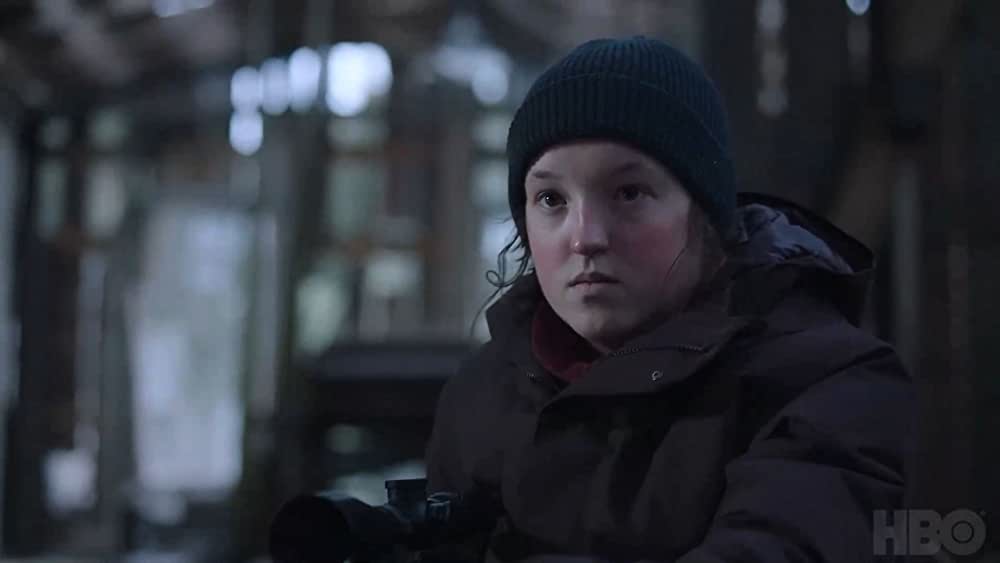★★★★★
This year, the nation has been struck by an inescapable epidemic, with Americans everywhere succumbing to an intoxicating force. Its name? Pedro Pascal. Or, more generally, the hit HBO Max series he stars in, “The Last of Us.” Luckily, the world was spared from another pandemic virus emerging this year, but the characters of “The Last of Us” were not so lucky.
In 2003, the world of “The Last of Us” was struck by the spread of cordyceps, an unstoppable, mind-controlling fungus that turns those infected into zombie-like creatures who bite others in order to spread the fungus. While this description might seem similar to many other zombie apocalypse stories, several elements of “The Last of Us” distinguish it from the rest.
Most significantly, this apocalypse is caused by a fungus, not a virus, meaning humanity has no known method of curing the infection. Especially coming out of the three year COVID-19 pandemic, the familiar sense of hopelessness in the face of something so huge and out of one’s control ingrains itself strongly in the viewer throughout the series.
While the show might initially appear to be curated for the post-pandemic world, it is based on a 2013 video game by the same name, and the plot remains essentially the same. Joel, a 56-year-old Texan trudging through what remains of his life while trying to find his missing brother, finds himself in custody of Ellie, a 14-year-old who is miraculously immune to the fungus. He is tasked with transporting her across the country to meet doctors who may be able to study her and work toward a cure.
The show’s heart lies in the bond between the two protagonists, as Joel journeys from being Ellie’s reluctant, gruff keeper to a surrogate father figure for Ellie. The lead actors, Pascal (Joel) and Bella Ramsey (Ellie), bring these characters to life through realistic emotional interactions, struggles and moments of joy.
Pascal, whose popularity in the media has skyrocketed since the show’s premiere, gives an incredibly raw, realistic portrayal of a morally gray character, showing how deeply trauma can alter someone’s psyche. At the same time, though initially seeming to hold back her full potential, Ramsey goes on to display arguably some of the best youth acting on television in recent years, portraying a wide range of emotions from cocky indifference to unbridled anger to mind-numbing fear.
Beyond the leads, practically every supporting actor contributes incredibly touching, or in some cases terrifying, performances. One of the most notable episodes barely features the leads at all — the third episode showcases the relationship between survivalist Bill (Nick Offerman) and the kind, artistic Frank (Murray Bartlett), as they find a way to live comfortably amid the wasteland surrounding them. Simultaneously heartwarming and heart-wrenching, this episode gives viewers a speck of hope despite the show’s dreariness. The episode leaves few viewers with dry eyes, and it has been acclaimed by critics and fans alike as the show’s strongest episode.
“The Last of Us” excels not only in its performances but also in its technical aspects. The prosthetics, makeup and special effects used to create the “infected” are stunningly realistic and horrifyingly beautiful. The feverishly unstable camera energizes the action sequences while also making scenes of dialogue appear more intimate and realistic. And while the show’s color palette is typically a dreary gray and blue that conveys a general sense of hopelessness, bright fiery orange and red sparks are used for the tensest, most emotional scenes, grabbing the viewer’s attention.
However, if the show falls flat in one aspect, it is in its pacing. Adapting a video game, which takes dozens of hours to complete, into a nine episode television show is daunting. While the show generally does an excellent job of representing the narrative of the game, episodes sometimes feel incredibly rushed or oddly long.
Even though it fails in some senses to create the same energy as the game, some of the changes in the adaptation add to the show’s message. For example, deeper dives into the lives of side characters like Bill and Frank were absent from the game but allow the viewer to immerse more fully in the world of “The Last of Us” as they show the audience the human side of tragedy. Further, these additions make it easier for viewers to sympathize with a wide array of characters as they face incredibly difficult decisions. “The Last of Us” posits that despite the overpowering darkness and violence of the world, light and hope can still be found.
As a whole, “The Last of Us” serves as one of the most successful exercises in both zombie media and dramatic television in recent years. The show succeeds in one of the most difficult aspects of an adaptation: faithfully representing the original source material without being a carbon copy. The first season is a solid start, leaving viewers eager to know what comes next for Joel and Ellie — and to see more of Pedro Pascal.














